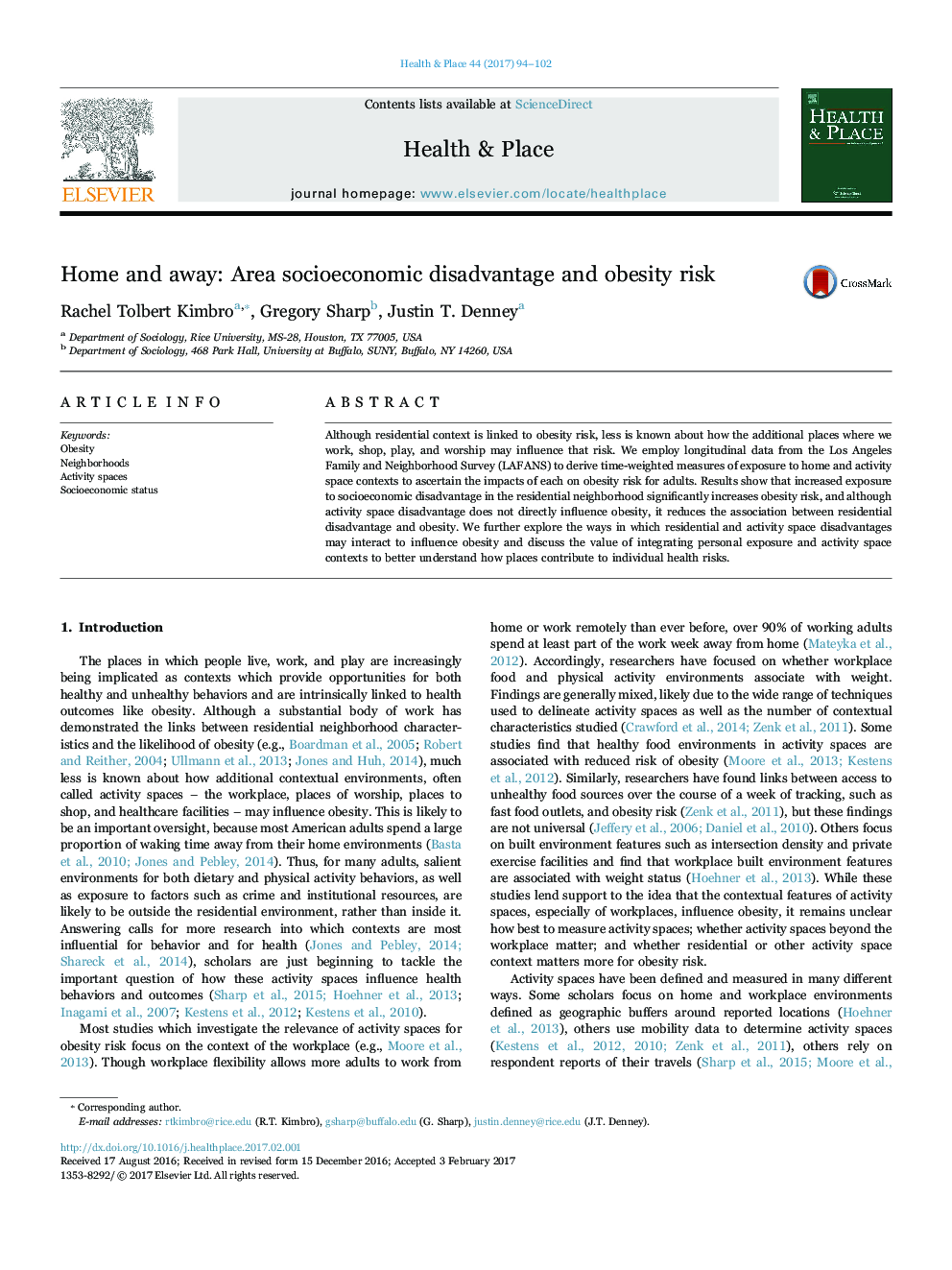| Article ID | Journal | Published Year | Pages | File Type |
|---|---|---|---|---|
| 5114760 | Health & Place | 2017 | 9 Pages |
Abstract
Although residential context is linked to obesity risk, less is known about how the additional places where we work, shop, play, and worship may influence that risk. We employ longitudinal data from the Los Angeles Family and Neighborhood Survey (LAFANS) to derive time-weighted measures of exposure to home and activity space contexts to ascertain the impacts of each on obesity risk for adults. Results show that increased exposure to socioeconomic disadvantage in the residential neighborhood significantly increases obesity risk, and although activity space disadvantage does not directly influence obesity, it reduces the association between residential disadvantage and obesity. We further explore the ways in which residential and activity space disadvantages may interact to influence obesity and discuss the value of integrating personal exposure and activity space contexts to better understand how places contribute to individual health risks.
Related Topics
Health Sciences
Medicine and Dentistry
Public Health and Health Policy
Authors
Rachel Tolbert Kimbro, Gregory Sharp, Justin T. Denney,
